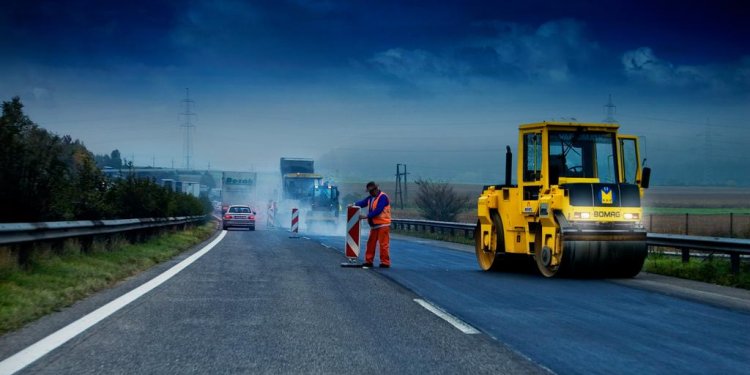
How to construction roads?
|
Building a road involved simple technology and heavy labor. The first task, to clear the road, was usually the most difficult. Stumps, boulders, brush and trees had to be cleared. Usually, this was done entirely by hand or with the help of horses. It was not until the construction of the Erie Canal that an ingenious workman invented a stump-puller; using this device, seven men and a team of horses could pull forty stumps in a day. Considering the density of forest through which many roads ran, even this was slow progress indeed. Once debris was cleared, leveling began. This was the distinguishing mark of an improved road, separating it from paths for foot travel or animal migration. Using hand-held rakes, hoes or sometimes horse-drawn scrapers, farmers and rural laborers supervised by township officials created a surface amenable to wagon and stage travel. The land also had to be surveyed by a professional to determine the most efficient route between two points. Distance, direction, and elevation all had to be measured. Distance, up through the early nineteenth century, was measured with an iron chain 66 feet long known as Gunter's Chain. Eighty chains equaled one mile; ten square chains equaled an acre. To calculate distance, Gunter's Chain was simply stretched between two points as many times as necessary. Direction was measured with a magnetic compass or a vernier, an instrument that measured horizontal angles; it allowed a surveyor to determine how much a sight line diverged from magnetic north- south. Most elevation measurement was done with a simple level, a flat device containing an glass cylinder of water with a small air bubble. Elevation changes were determined by attaching the level to a sight, placing a vertical measuring rod some distance away, and then reading through the sight the relative height of the second location. Changes in elevation were extremely important in roadbuilding; in the interest of efficient travel, it was followed that a wagon pulled by horses could only traverse a grade of five degrees (a vertical rise of 462 feet per mile). Cleared, flattened and graded, a road could be finished at this point. However, builders found that these sorts of roads eroded quickly. Drainage ditches were added to stay the erosion process and avoid wheel ruts, but a permanent road badly needed a top cover of stone. In 1799, an anonymous roadbuilder published "Directions for Making Roads" in the Philadelphia Magazine and Review. Here is his advice on laying stone: "The stones should be spread equally over the surface, and settled with a light sledge [hammer]; in this operation, such stones as are too large, must either be broken or carried away; over this a layer of small stones, not larger than eggs, should be scattered, and settled with hammers between the interstices of the largest. Over this a small quantity of any hard clay, just sufficient to cover the... |

















